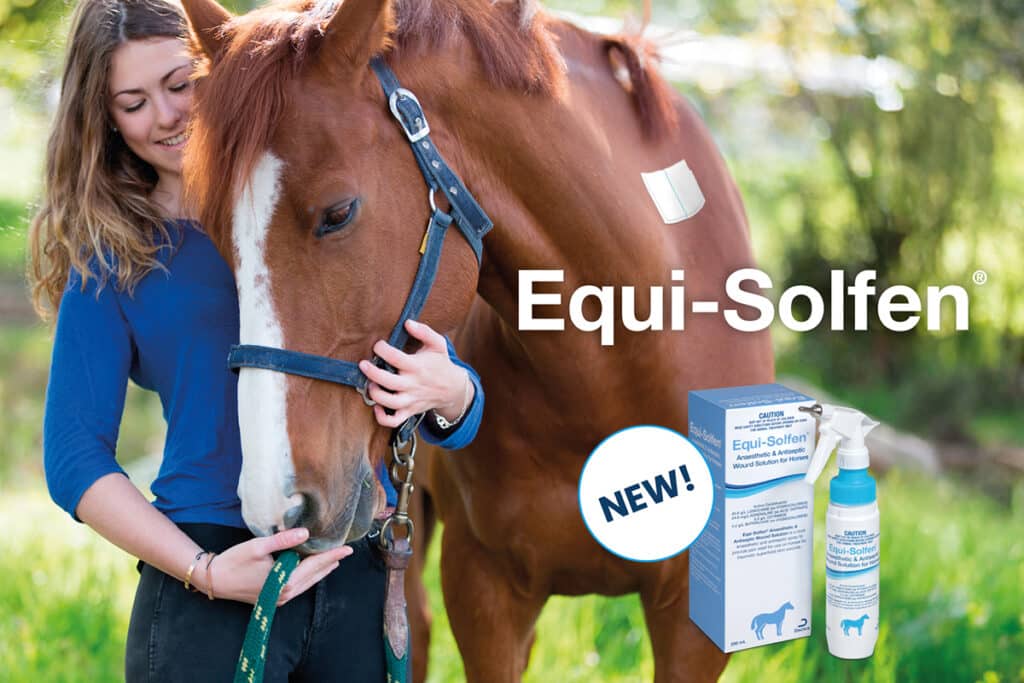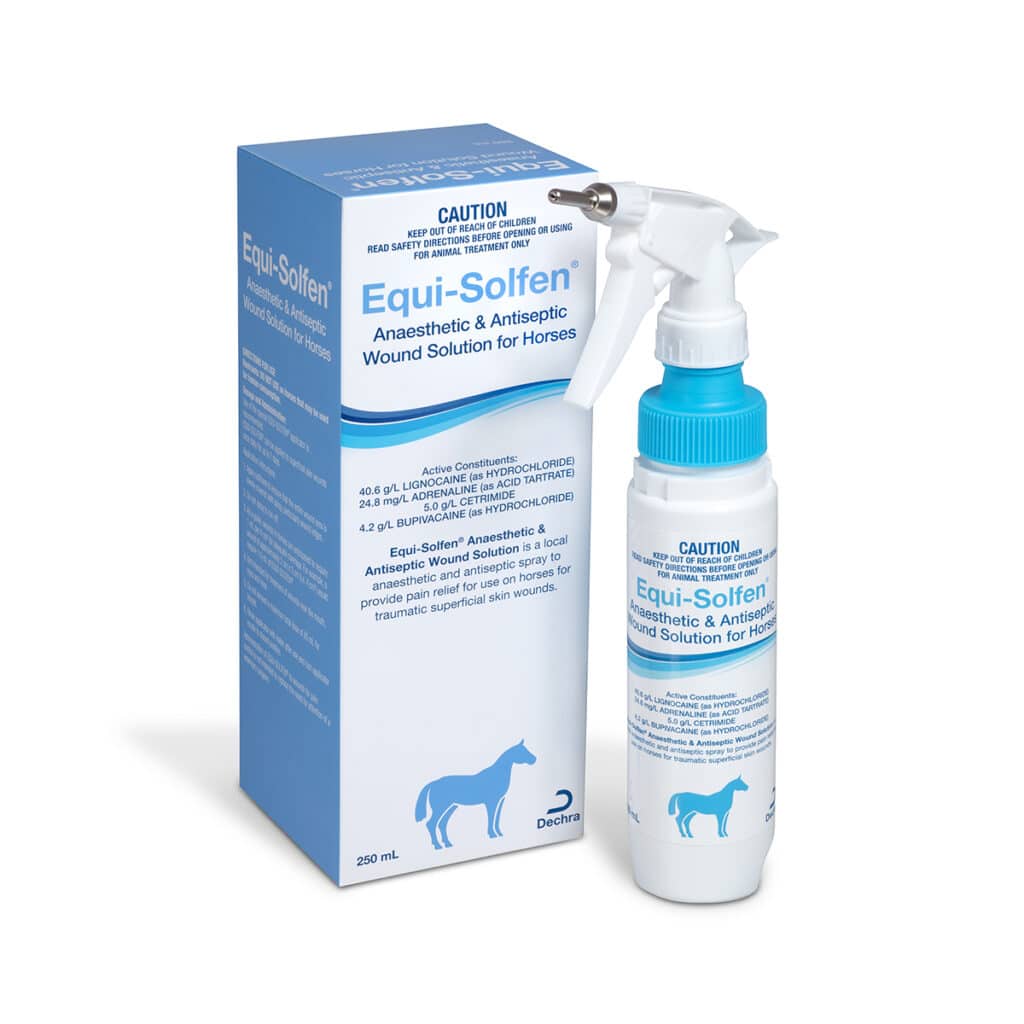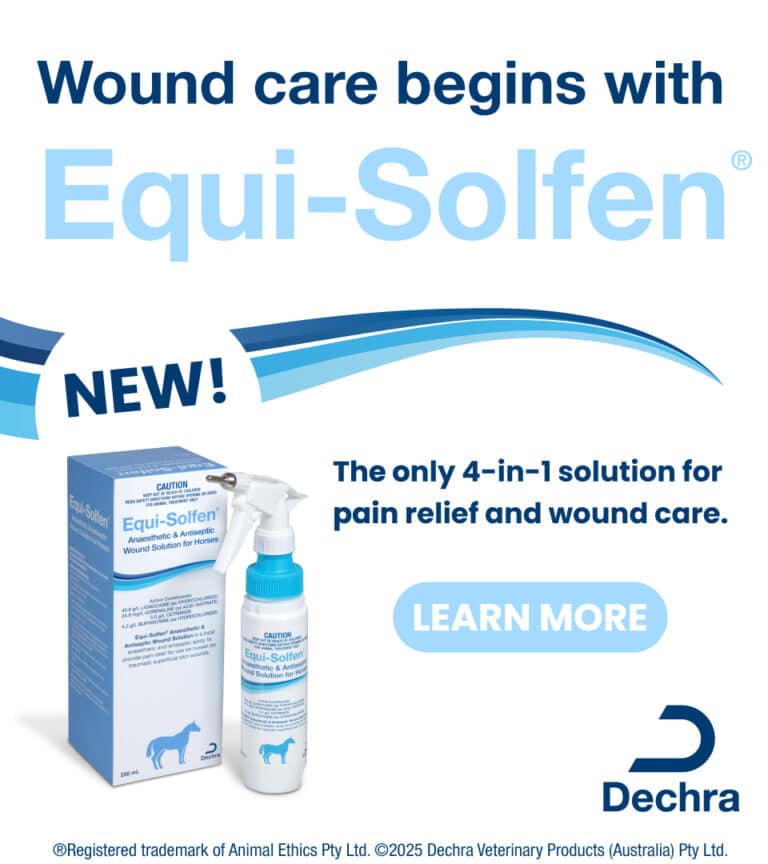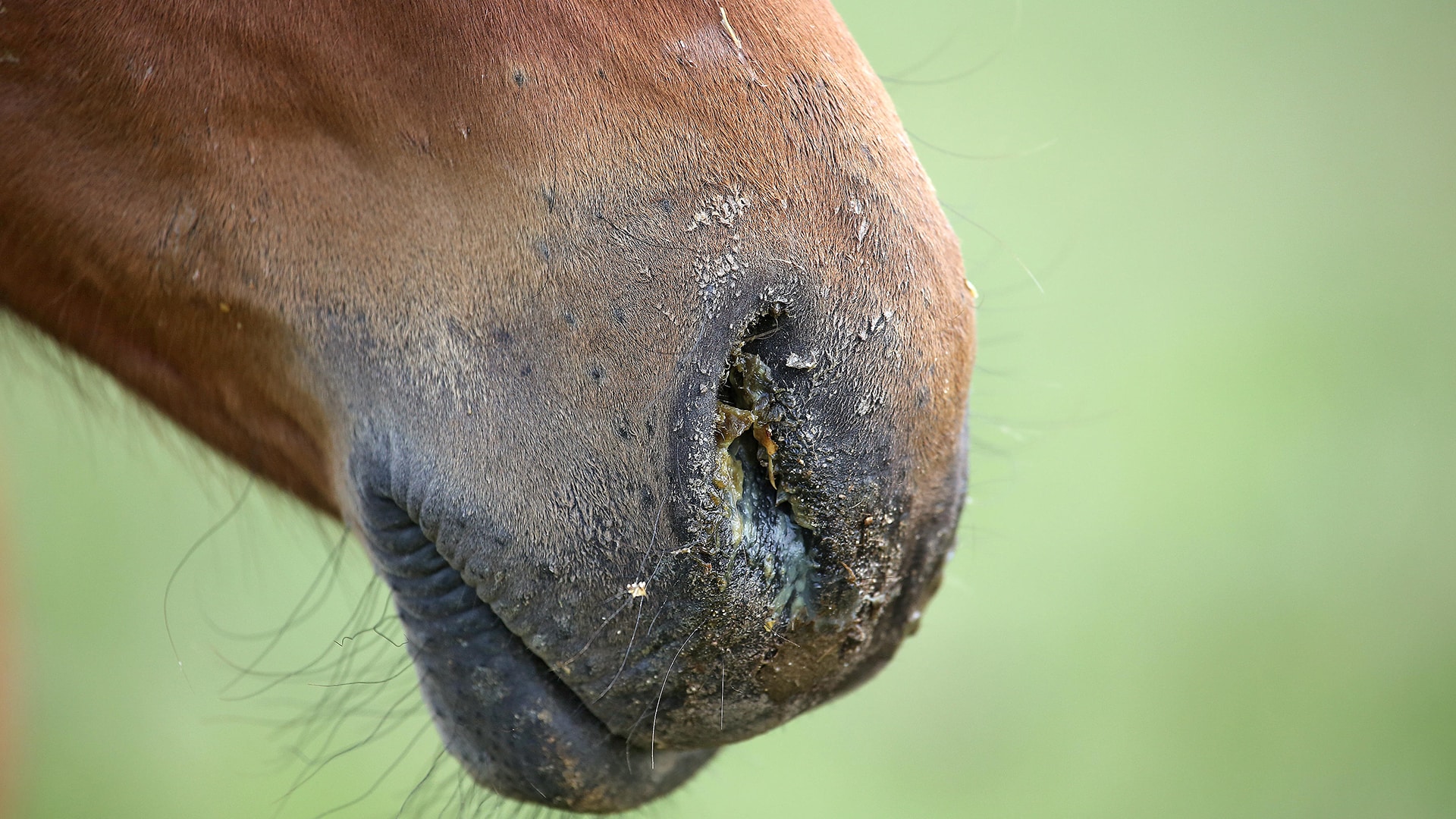Superficial wounds in horses may appear minor but can lead to complications if untreated. Proper first aid is important – as is knowing when to seek veterinary care – and now, new products like Equi-Solfen are here to support healing and pain relief.
A wound is any disruption in the continuity of skin. Superficial skin wounds are limited to the upper layers of the skin. Deeper wounds, such as punctures or avulsions (skin tears) can reveal important structures, such as muscle, tendon, ligaments or bone.
The wound location and the tissues involved are more critical than the overall appearance of the wound. Even small wounds, particularly those close to tendons or joints, can have serious complications.
IDENTIFYING WOUND TYPES
It is always advisable to consult a veterinarian to determine the best treatment. Sometimes, this advice can be given over the phone. It is important that you describe the wound to your veterinarian accurately:
Incisions and lacerations, such as those caused by barbed wire, glass or other sharp objects, can bleed heavily and may involve deeper structures.
Abrasions, such as those caused by friction across a hard surface, often contain debris, such as grit, sand or dirt. These wounds will require thorough cleaning to remove the debris.
Penetrating or puncture wounds, such as those caused by nails and thorns, can involve underlying structures and are prone to infection.
Contusion (bruising), such as a kick from another horse, causes damage within and below the skin. The skin surface may not be broken.

It is always advisable to consult a veterinarian to determine the best treatment.
Equi-Solfen contains four active ingredients:
Lignocaine and bupivacaine, which are two local anaesthetics that are commonly used to provide pain relief. They block the nerve signals from damaged tissue that are responsible for the sensation of pain, reducing the horse’s pain response. Lignocaine provides immediate (within 60 seconds) pain relief on wounds. Bupivacaine provides longer-acting (up to 24 hours) pain relief.
Adrenaline, which reduces bleeding and slows the inflammatory cascade.1 Adrenaline constricts blood vessels on wounds, reducing blood loss and minimising stress and shock.
Cetrimide, which is an antiseptic and surfactant that helps to start the healing process and protect against infection.

Equi-Solfen is a new anaesthetic and antiseptic spray that provides 4-in-1 pain relief and wound care for horses with superficial skin wounds.
HOW TO APPLY EQUI-SOLFEN
Each 250 mL pack includes a spray applicator that turns the liquid formulation into a foaming gel that adheres to the wound. It can be applied to superficial skin wounds once daily for up to seven days.
“Apply one squirt – about 1 mL – of Equi-Solfen per four square centimetres of wound area,” Ben explains. “Cover the entire wound area with spray, particularly wound edges, taking care not to spray the mouth, eyes or nostrils or to the point of run-off.”
“After use, remove and rinse the applicator with water and turn the applicator nozzle to its closed position. Replace the blue cap on the bottle and store product and applicator nozzle separately.”
It’s important to note that administration of Equi-Solfen to wounds is not intended to replace the need for attention of a veterinarian.
“Even small wounds, particularly those close to tendons or joints, can have serious complications,” Ben says. “Often, the wound location and the tissues involved are more critical than the appearance of the wound. That’s why is always advisable to consult a veterinarian to determine the best treatment.”
Many wounds can actually be closed in the field, and in some cases a veterinarian may opt to leave the wound open, or may place a drain into the surgical site to help release fluids during healing. Some wounds may require surgery or specialist treatment at a veterinary hospital.

Equi-Solfen is available from equestrian stores, produce stores, rural stores or veterinary clinics without a prescription.
Always consult your veterinarian if the wound is bleeding heavily; involves the ears, nose or throat; deep; reveals tissue, muscle, tendon, ligament or bone; close to a joint or tendon and leaking a clear discharge; inflamed (i.e. hot or swollen); infected (i.e. significant or offensive discharge); growing in size; or not healing or tissue within the wound becomes ‘proud’ (i.e. it stands out from the wound).
Equi-Solfen is available from equestrian stores, produce stores, rural stores or veterinary clinics without a prescription.
For more information, about treating superficial wounds on horses, visit equisolfen.com.au or contact your veterinarian.
Source: 1. Lomax, S. et al. (2013). Duration of action of a topical anaesthetic formulation for pain management of mulesing in sheep. Aust. Vet. J. 91:160-167. ®Registered trademark of Animal Ethics Pty Ltd. ©2025 Dechra Veterinary Products (Australia) Pty Ltd. DEC25304. EQ






